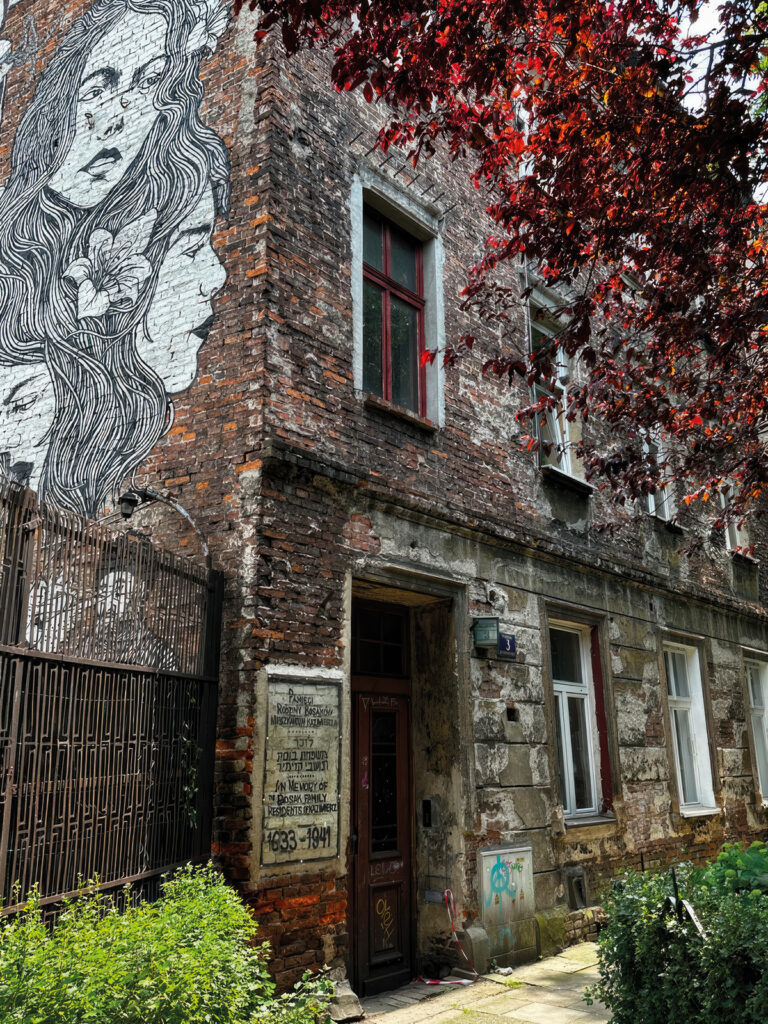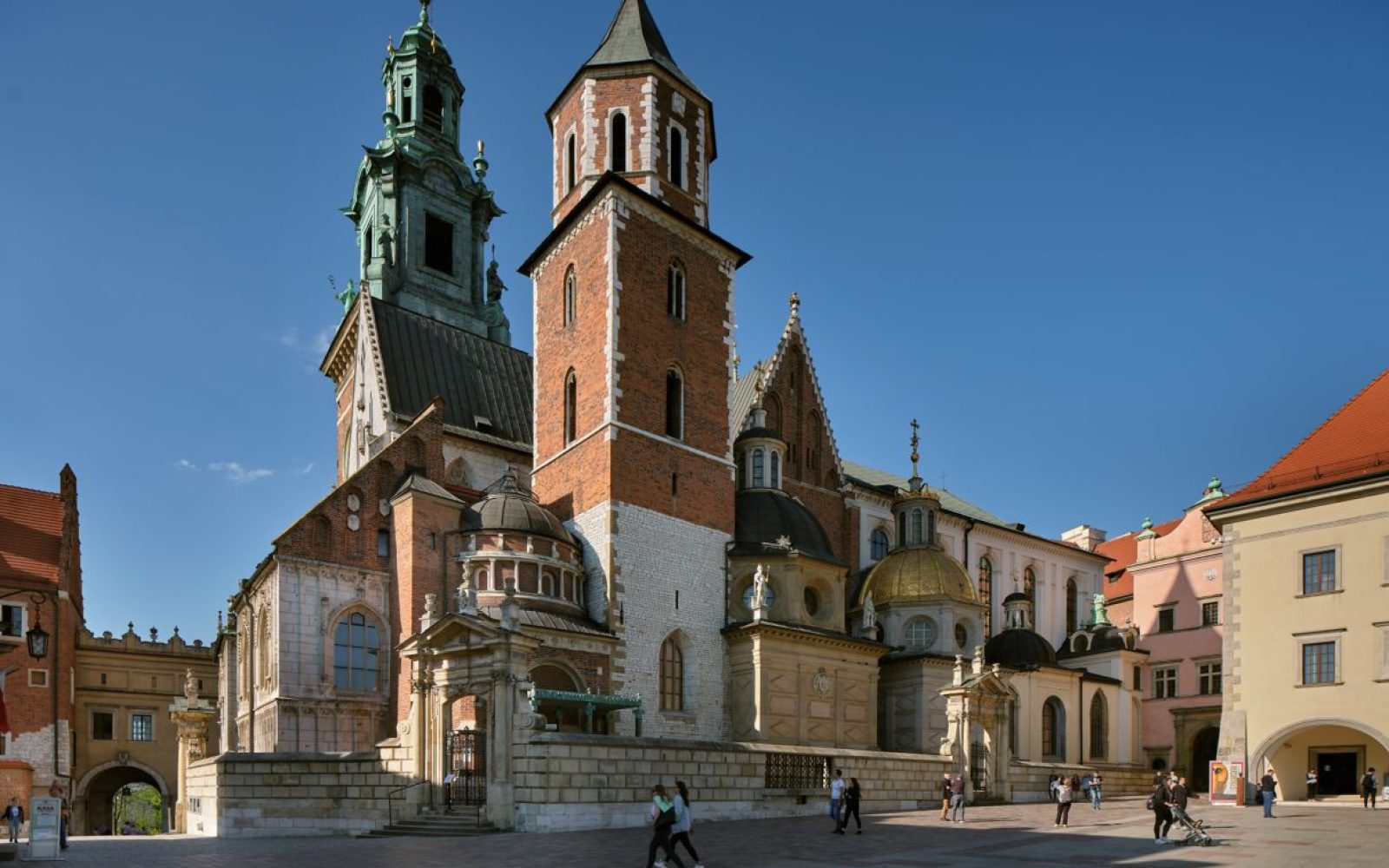Known as the art and culture capital of Poland, Kraków is a delight for Middle Eastern travellers with a keen appreciation for creativity. MOJEH discovers the city through its art, inside its hallowed museums and galleries and out on its streets
Perhaps more than any other place in the world, Kraków is defined by its art. With more museums and galleries than cars on its streets, Poland’s medieval city draws artists, connoisseurs and creatives from across the globe.
One of Leonardo da Vinci’s few surviving portraits, Lady with an Ermine, is housed at the iconic Czartoryski Museum in Kraków’s Old Town. According to historians, this is the first portrait of the modern age in the world, older than the Mona Lisa, and considered a national treasure for the Poles. The museum also houses Rembrandt’s Landscape with the Good Samaritan, making it a compelling visit for art aficionados.
Across the cobblestone streets at the 3,700 square metre Market Square, a medley of quaint cafes, ice cream shops and bookstores seize the senses. Narrow lanes form tributaries, bustling with street performances and devotional choirs at the steps of baroque churches. The sound of church bells rings across the town, underlining its old-world charm.
All tributaries feed into one of Poland’s most historically and culturally important sites, the Wawel Castle. The 16th century renaissance castle hosts Kraków’s celebrated art museum The Wawel Royal Castle National Art Collection. Visitors are treated to residential exhibitions that illustrate Poland’s heritage and cultural significance.

The Czartoryski Museum houses extremely rare Leonardo da Vinci works
Stepping out of Old Town, the erstwhile centre of the city’s political and religious life, the city starts to look distinctly different. A sizeable moat around the old town turns into a tree-lined walkway and cobblestones are replaced with concrete.
In the Kazimierz neighbourhood, pre-war buildings flank the streets, punctuated with boutiques, restaurants and bars. The 14th century quarter, now one of the hippest areas for a night on the town, is also a canvas for the city’s creative community. The neighbourhood features a particular graffiti artwork that gained worldwide fame during the pandemic. The graffiti said ‘Bedzie dobrze’, which means ‘It’ll be okay’, at a time when the world was under lockdown, businesses were shutdown and there was an air of uncertainty. The message offered a sense of hope and optimism.
According to local artist and curator, Artur Wabik, it has now become fashionable for cafés, restaurants and even hotels to feature street art at their venue. “There’s a distinction made between street art and graffiti. The former is more artistic and narrative — but essentially, it’s just about context,” he says. “Graffiti is simply a countercultural phenomenon that is governed by its own laws. Meanwhile, street art or urban art has become part of the mainstream.”

Wandering Kraków’s streets will allow you to stumble upon famous art
Over the river Vistula, which runs across the city, the majestic Father Bernatek’s Bridge connects Kazimierz to another historic neighbourhood, Podgorze. The footbridge is an important landmark for the city, adorned with an astonishing art installation by local sculptor Jerzy Kedziora. Nine metal sculptures appear to be suspended mid-air from the bridge in acrobatic action, seemingly defying gravity over the river. The sculptor calls his work Between the Water and the Sky.
Across the bridge, Podgorze is home to a wealth of street art: some allude to the neighbourhood’s tumultuous past as a ghetto, while others attempt to speak against propaganda. Italian street artist Blu, considered to be one of the most prolific street artists in the world, has contributed to the urban canvas here. Anonymous, like Banksy, the artist was commissioned to paint a giant wall with the help of a construction crane. Open to interpretation, his art aims to convey an important social message to the masses.
Not far from Hero’s Square in Podgorze, one of the most important WWII memorials in the country is a street lined with murals. Sequestered in a 125-year-old building, a picturesque café and art gallery sits surrounded by walls and gates doused in brilliant hues. “This used to be a glass manufacturing factory and it has history so for us, it’s about storytelling through art,” says Dominik Koza, owner of the café and art gallery Targowa2. He, along with other establishments in the neighbourhood, frequently commission street artists to work on their properties. “People in the community here accept expressive arts. Murals and art on the streets are not only beautiful but also carry important messages that reflect the mindset of the youth in the city. It’s an important aspect of life in Kraków — a very vital part of life foreach of us,” he adds.

Art is visible at every turn in Krakow, from thought- provoking images and street art by famed artists such as Artur Wabik
Oliwia Smulch, one of the artists commissioned by Koza, believes Kraków’s creative community takes great efforts to seamlessly blend street art into the city’s historic atmosphere: “Murals such as those found on Józefa 17 and the Balu Never Follow mural on Józefińska 13 all contribute to the overall ambiance of the city.”
A short distance away is the district of Lipowa, where inside a demolished part of the famed Schindler’s Factory lies the Museum of Contemporary Art Kraków [MOCAK]. The 13-year-old museum aims to present the art of the two last decades in the context of the post-war avant garde and conceptual art. Known for its brave themes, young and emerging artists as well as a fresh perspective on contemporary art, the museum is an unmissable stop on the city’s art map.
Today, traditional art galleries such as MOCAK are using street art to promote their exhibits in an attempt to reach the masses. In turn, street art is finding legitimacy and acceptance from art establishments, galleries and even the government. Blurring the distinction between both sides of the art world, Krakówis at the cynosure of this change. The city’s love of art, whether historical, political or whimsical, is not only deep and all-encompassing, but also infectious.
Where To Stay

The Balthazar Design Hotel is situated in a 16th century townhouse
Hotel H15 Palace
Located at St. John’s street at the erstwhile Polish aristocrat residence, the hotel was constructed by bringing together four townhouses. The complex was then turned into a palace, filled with rare art and furniture and is still considered a treasure for Krakow today. Book now
Balthazar Design Hotel
Nestled inside a historic townhouse dating back to the 16th century, this boutique luxury hotel is among the most stylish and beautifully designed contemporary hotels in Kraków. Book now
Stradom House, Autograph Collection
The hotel lies between the Royal Castel and the bustling district of Kazimierz, offering a blend of Polish modernism and original historical details. Book now
Read Next: Why A Stay At This Luxurious National Monument Should Be On Your Travel Bucket List
- Words by Priyanka Pradhan





